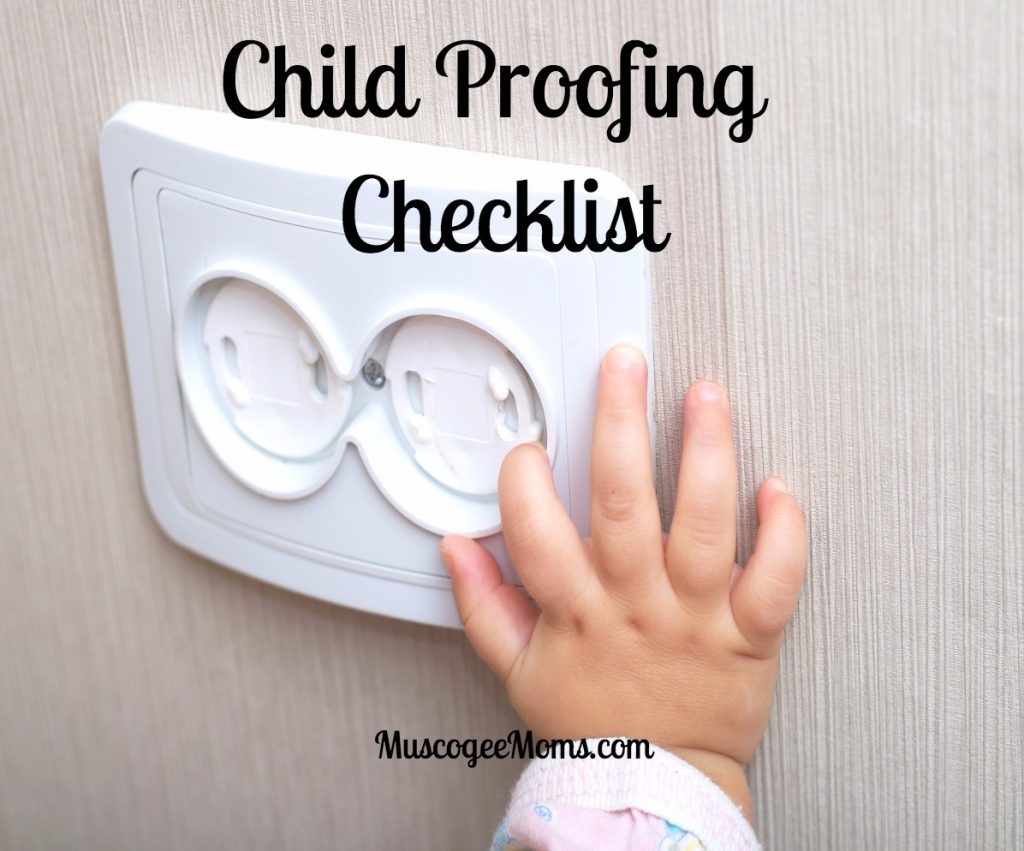
A Child Proofing Checklist:
Protecting little fingers and little toes
As a parent, one of your most important tasks is ensuring your baby’s safety.
According to the Centers for Disease Control and Prevention (CDC), unintentional injuries — such as burns, drowning, falls, poisoning and road traffic — are the leading cause of death among children in the United States. That’s why home safety is so important. Child proofing your home will give you peace of mind now and can help to prevent a trip to the emergency room later.
Ideally, you should start child proofing your home before your baby is born. However, child proofing should definitely to be done before your baby starts crawling. The best way is to get down on your hands and knees. Crawling from room to room will give you the same ‘view’ as your baby and will help you spot small or fragile objects. Look for anything that could fit into your baby’s mouth such as marbles, coins and other stray items.”
Here is a room-by-room child proofing checklist to get you started.
NURSERY
- Bedding – Avoid soft bedding, stuffed animals and pillows. Don’t use crib bumpers. When baby gets up on hands and knees, remove mobiles and hanging toys.
- Changing table – Use a sturdy table with 2-inch guardrails on all sides. Always use a safety strap and keep supplies within reach. Never leave your child unattended.
- Crib – Make sure that your crib meets today’s safety standards (see cpsc.gov for tips). Keep crib away from windows. Make sure the mattress is firm and fits snugly without any gaps. Consider moving your child to a regular bed when she is 35 inches tall.
- Windows – Cut looped window-blind cords; use safety tassels and cord stops.
- Toy chests – Use chests without lids or with supports that hold the lid open in any position. Discard all toys with loose or broken parts.
- Bed – Use a detachable rail to prevent falls.
BATHROOM
- Bathtub – Never leave child unattended in bathtub. Install a non-slip mat. Cover water spout with soft cover.
- Toilets – Install safety guards on all toilets and keep lid closed to prevent drowning.
- Medicine cabinet – Keep all medicines in containers with safety caps and store in a locked cabinet. Keep a fully stocked first-aid kit on hand.
- Appliances – Unplug hair dryers, electric razors and other devices when not in use and store out of reach.
- Water – To prevent scalding, set your hot water heater to a maximum of 120 degrees Fahrenheit.
KITCHEN
- Cleaning products – Keep toxic chemicals in their original containers and store in a high cabinet. If kept under the sink, install a childproof lock on the cabinet doors.
- High chairs – Always use restraining straps.
- Microwaves – Avoid heating baby bottles in microwave ovens.
- Fire extinguisher – Keep mounted in easily accessible location.
- Cabinets/ drawers – Install latches or locks. Store plastic bags, knives and heavy objects out of reach.
- Appliances – Secure refrigerator and oven door with appliance latches. Install a stove guard and knob covers, or take knobs off stove when not cooking. Keep pot handles turned toward back of stove. Keep other appliances unplugged and out of reach.
- Stove – Lock your stove knobs with protective appliance knob covers.
LIVING ROOM/ OFFICE
- Electrical cords – Hide or tape down electrical cords. Put outlet covers on all unused electrical outlets.
- Floors – Install carpet on stairs to prevent slipping. Check floors constantly for small objects that might be a choking hazard.
- Furniture – Cushion sharp edges and corners of furniture. Anchor unsteady furniture to walls with furniture straps.
- Media – Protect VCRs and DVDs with media guards or move out of reach. Install plastic covers over computer towers. Unplug office equipment like paper shredders when not in use.
- Fireplaces – Install a fire screen and keep matches, logs and fireplace tools out of reach.
- Doors – Use doorstops and door holders to protect little fingers.
- Stairs – Install safety gates at the top and bottom of stairs. If railings have openings wider than 4 inches, block with Plexiglas, safety netting or other material.
- Plants – Get rid of toxic houseplants such as philodendron or move out of reach.
BASEMENT/ GARAGE
- Tools/ chemicals – Keep all paints, toxic chemicals and tools out of reach. Storage areas should be locked. Unplug power tools when not in use.
- Garage doors – Automatic garage door openers that do not automatically reverse upon contact with an object should be replaced to prevent entrapment.
GENERAL TIPS
- Install smoke and carbon monoxide detectors throughout home. Check batteries monthly.
- Use night light to prevent falls.
- If your home was built before 1978, check for lead paint.
- Post emergency phone numbers by each phone, including parents’ work numbers, pediatrician’s number and the number for Poison Control.
- Create a fire escape route and practice with your children.
- Cut window-blind cords.
- Use safety gates, door locks and knob covers to control access to “off-limits” areas.
- Install door chimes on all outside doors to alert you when those doors are accessed. Some home security systems provide with this feature.
- Keep guns unloaded and stored in a locked and inaccessible location. Store ammunition in a separate locked and inaccessible location.
Outdoors
- Install fencing at least 4 feet high around swimming pool. Also install a pool alarm.
- Make your backyard a kid-free zone. Banish kids from the grilling area, as well as any structure or shed that might contain tools, lawn mowers, etc.
As your baby grows, so do the safety hazards, so check your home frequently. Every few months go through your home from top to bottom and look for any new hazards. Keep your pediatrician’s phone number and the number for the Poison Control Center posted next to all phones.
Last, but most importantly, always supervise your child.


